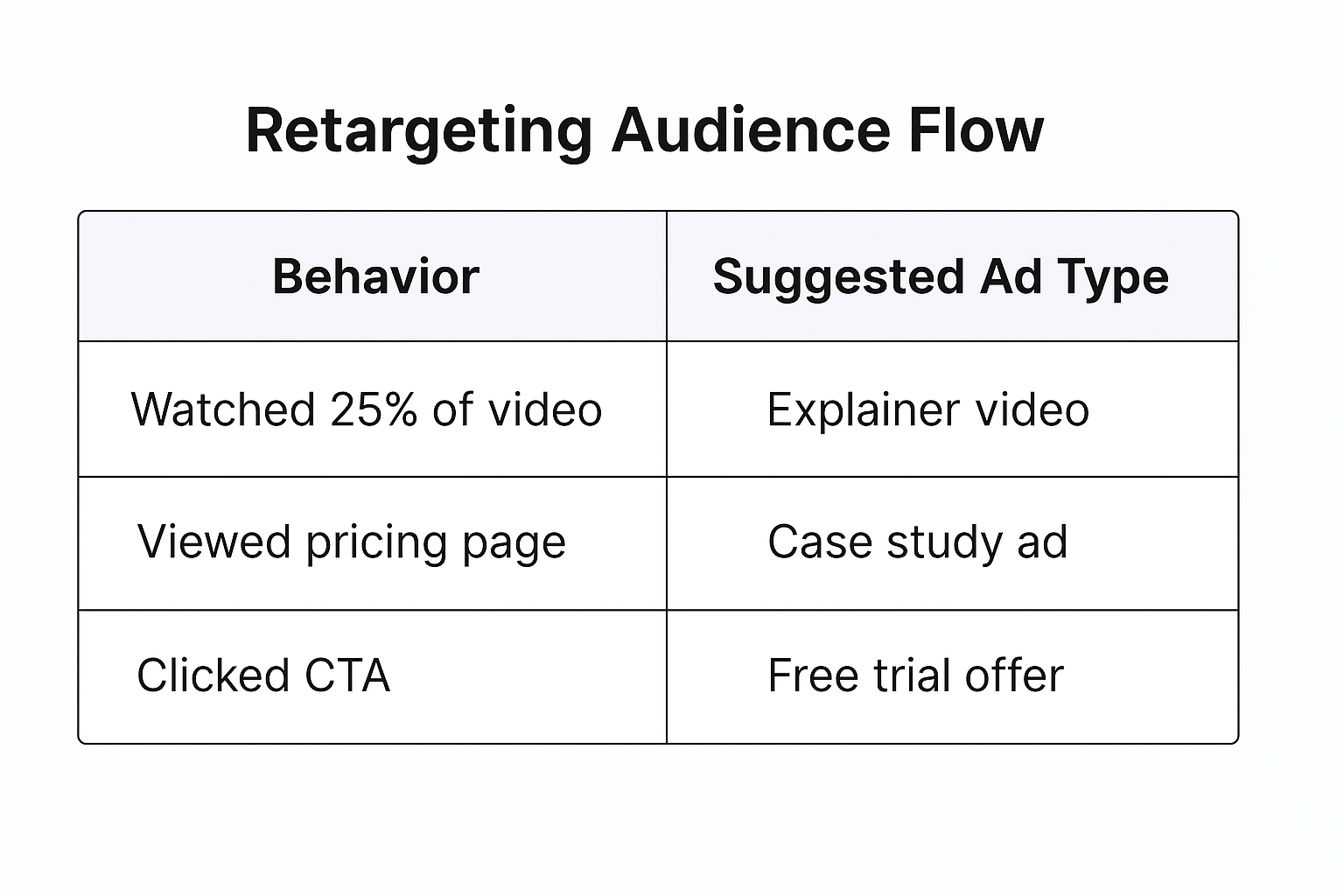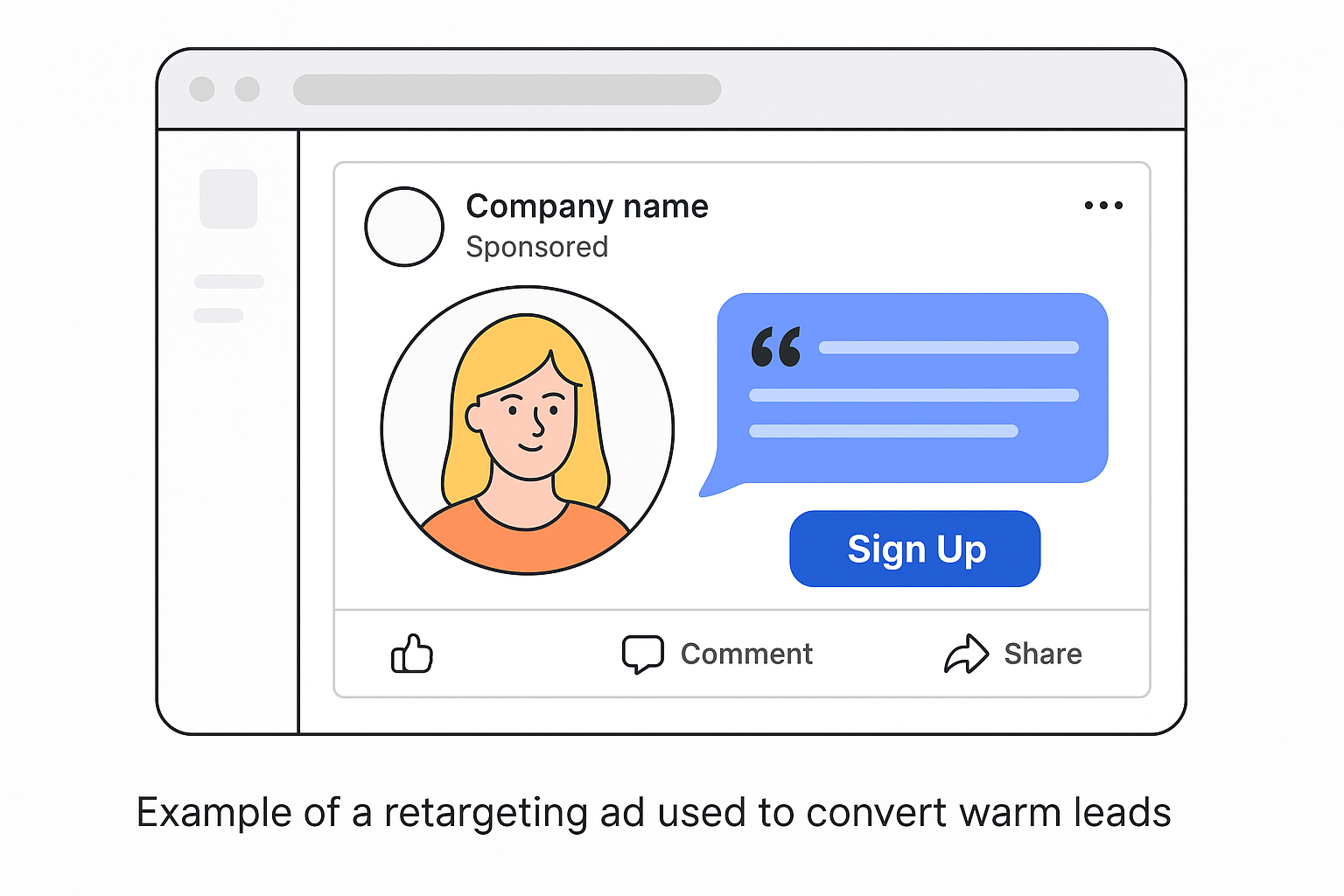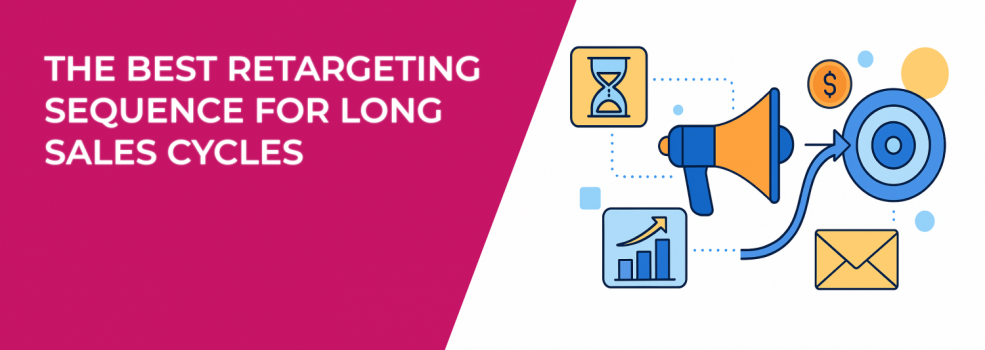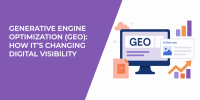When your product or service has a long decision-making process — whether it’s B2B software, enterprise services, or anything that takes more than a few clicks to convert — you can’t afford to run one ad and call it a day. You need a retargeting sequence that works like a well-timed conversation, not a single shout in a crowded room.
Why Retargeting Works So Well for Long Sales Cycles
Retargeting lets you reconnect with people who’ve already shown interest. In long sales cycles, this is gold. Your prospects aren’t deciding today — they’re thinking, comparing, asking around. You need to stay visible without being annoying.
Here’s why smart marketers rely on structured retargeting:
-
It keeps your brand top-of-mind during the long decision process.
-
It builds trust gradually by showing helpful, relevant messages.
-
It helps speed up sales cycles by removing friction and answering objections.
-
It saves money compared to cold outreach or broad targeting.
If you haven’t set up retargeting yet, here’s a quick step-by-step guide to getting started.
The Retargeting Sequence Framework
To get the most out of retargeting, don’t just show the same ad over and over. Break it into phases, each aligned with how close the lead is to making a decision. You can adapt this framework to your funnel, whether your average conversion takes 30 days or 6 months.
Phase 1: Re-Engagement & Awareness
In this phase, you're reconnecting with visitors who showed interest but didn’t dive deeper. These people may have seen your homepage, clicked an ad, or watched part of a video — but didn’t take further steps.

Here’s who you should target:
-
People who visited your homepage or blog.
-
Users who clicked an ad but didn’t engage much.
-
Viewers who watched under 25% of a video.
And here’s the kind of content to show:
-
Educational or entertaining videos that introduce your solution.
-
Explainer content or short tips.
-
Blog posts that relate to the problem your product solves.
If your Facebook retargeting ad isn’t reaching enough people, check for issues like narrow audiences or delivery problems. This article breaks down what to do if your ad set might get zero delivery.
Phase 2: Consideration & Education
Once people have engaged with more meaningful content, it’s time to move them further down the funnel. These are warm leads who are actively exploring your offer.
Consider retargeting:
-
Visitors of your product or pricing pages.
-
Leads who downloaded a guide or joined your email list.
-
Users who watched at least 50% of a video.
-
Webinar registrants who didn’t attend.
Content that works well here includes:
-
Case studies with measurable results.
-
Product walkthrough or testimonial videos.
-
Comparison guides or ROI calculators.
-
Email series with helpful, relevant value.
This is a great stage to integrate Facebook Ad Targeting 101 strategies, so you’re not just targeting based on actions but aligning messages with audience intent.
Phase 3: Decision & Trigger Offers
In this phase, your audience is close to making a decision — they’ve probably visited your demo or pricing page more than once or interacted with your sales team. Now it’s about giving them that final nudge.

Target these groups:
-
People who visited your pricing or demo pages multiple times.
-
Leads who clicked on "Contact Sales" or other high-intent CTAs.
-
Highly engaged users from your email list.
Offer content such as:
-
A free trial or demo request.
-
Limited-time offers or bonuses.
-
Personalized consultations or audits.
At this stage, be careful about ad fatigue. If someone sees the same message too often, it can backfire. Use these frequency capping tips to strike the right balance.
Also, make sure you’re using the right objective for this phase. Learn more in Meta Ad Campaign Objectives Explained.
Phase 4: Post-Purchase Nurture (Optional)
If your buyer has already converted, your relationship with them isn’t over. Post-purchase retargeting helps you increase lifetime value, reduce churn, and even drive referrals.
You can retarget recent buyers to:
-
Promote onboarding content or tips.
-
Upsell premium features or add-ons.
-
Invite them to join webinars or online communities.
-
Ask for testimonials, reviews, or referrals.
Smart brands know this phase can be just as profitable as the initial conversion.
Smart Tips to Make Retargeting Work
If you want your retargeting sequence to work well, you need more than good creatives. Execution matters. Here are some additional tips:
Start by clearly segmenting your audiences:
-
Someone who bounced from the homepage is not the same as someone who clicked "Book a Demo."
-
Use behavioral signals to group your leads — based on intent, timing, and touchpoints.
Then, make sure your messages are relevant to each segment:
-
Don’t pitch a free trial to a cold lead.
-
Don’t show basic explainer ads to people ready to convert.
-
Refresh your ads every few weeks to avoid fatigue.
Finally, monitor and refine your campaigns:
-
If results drop off, check your CTR, CPM, and frequency.
-
Watch for signs of "ad blindness."
-
Always exclude people who’ve already converted.
Still not seeing results? Here’s what to do if your Facebook ads aren’t converting.
Final Thoughts
Long sales cycles require long-term attention. A single ad won’t move the needle — but a thoughtful retargeting sequence will.
Break it down by funnel stage. Match your message to the moment. And test, refine, and adjust as you go.
If you’re still relying on broad cold targeting, this is your cue to shift gears. Learn how retargeting compares to broad targeting in this helpful breakdown: Retargeting vs. Broad Targeting: Which Strategy Drives Better Results?
Done right, retargeting not only improves conversions — it builds trust, reduces ad waste, and turns interest into revenue.

